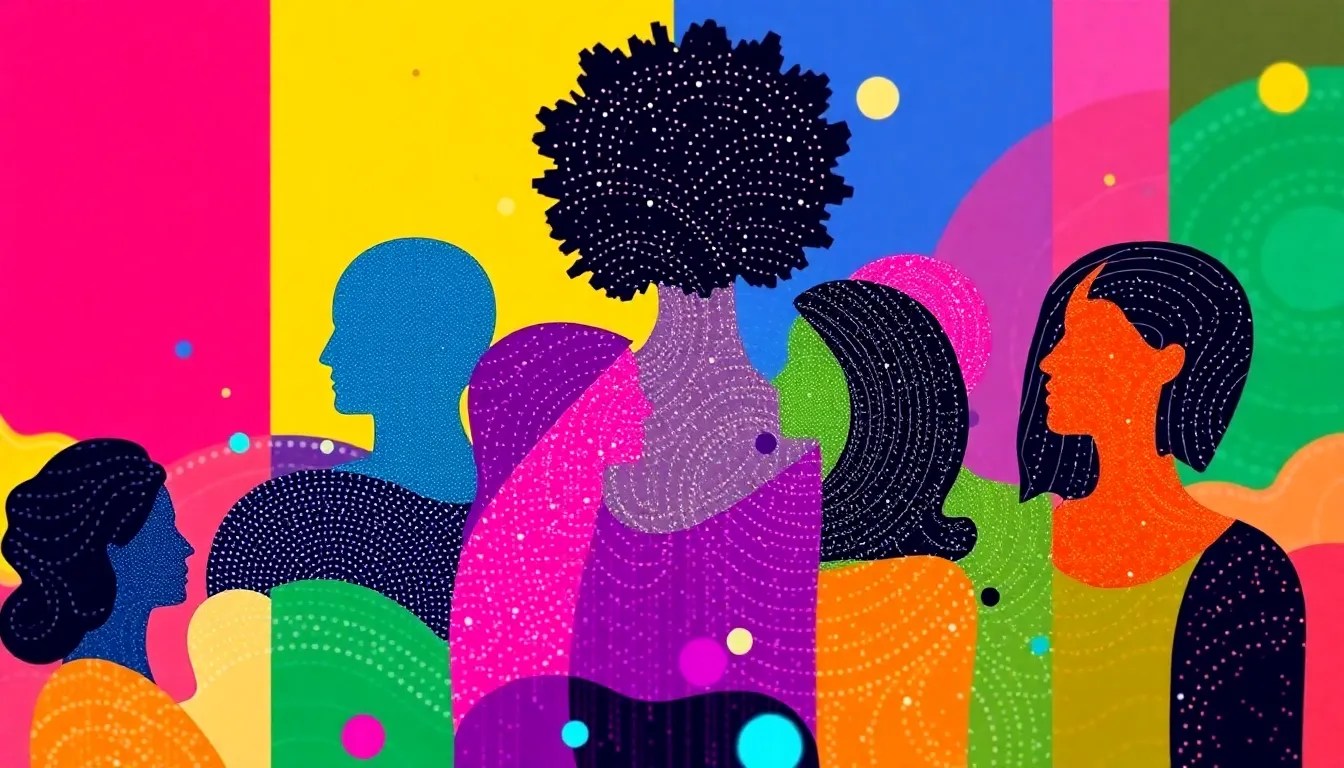Visualizing Diversity: How Data Representation Can Promote Inclusion
I. Introduction
Diversity and inclusion are critical components in the landscape of science and technology. Diversity refers to the presence of differences within a given setting, including race, gender, age, sexual orientation, and more. Inclusion, on the other hand, involves creating environments in which any individual or group can be and feel welcomed, respected, supported, and valued.
As we strive for a more equitable society, the importance of data representation in understanding and promoting diversity cannot be overstated. By effectively visualizing data, we can identify disparities, track progress, and develop strategies that encourage inclusivity across various sectors.
This article aims to explore the role of data visualization in understanding diversity, highlight cutting-edge techniques in data representation, discuss challenges in the field, and provide insight into organizations leading the way. We will also look towards future trends and best practices for effective data visualization.
II. The Role of Data Visualization in Understanding Diversity
Data visualization is the graphical representation of information and data. By using visual elements like charts, graphs, and maps, it helps to make complex data more accessible, understandable, and usable. The significance of data visualization extends beyond aesthetics; it enables stakeholders to grasp complex patterns and relationships in the data.
Examples of how visualization can highlight diversity metrics include:
- Infographics displaying the gender breakdown in various scientific fields.
- Maps illustrating the geographic distribution of underrepresented populations in technology.
- Dashboards that track diversity hiring metrics over time.
The benefits of visualizing data for various stakeholders—such as organizations, policymakers, and the public—are immense:
- Enhanced Decision-Making: Visual data can inform better decisions regarding diversity initiatives.
- Increased Awareness: Visualizations can raise awareness about diversity issues and engage broader audiences.
- Accountability: Organizations can hold themselves accountable by tracking and presenting their diversity metrics transparently.
III. Cutting-Edge Techniques in Data Representation
Advanced data visualization tools and technologies are revolutionizing how we represent diversity data. Tools such as Tableau, Power BI, and D3.js allow for the creation of dynamic, interactive visualizations that can engage users in new ways.
Case studies of innovative visualizations promoting diversity include:
- Interactive Maps: These maps show the demographic breakdown of STEM fields across different regions, allowing users to explore where diversity efforts are succeeding or lagging.
- Infographics: Organizations like the American Association for the Advancement of Science (AAAS) produce infographics that effectively communicate diversity data to a general audience.
The impact of AI and machine learning on data representation is also noteworthy. These technologies can analyze vast datasets, uncovering patterns that may not be immediately apparent and allowing for more nuanced visualizations of diversity data.
IV. Challenges in Data Representation
Despite the advancements in data visualization, there are common pitfalls that can lead to the misrepresentation of diversity data. These include:
- Bias: Visualizations can inadvertently reinforce stereotypes or exclude certain groups if not designed carefully.
- Misrepresentation: Without context, data can be misleading; for instance, showing overall diversity without highlighting intersectionality can obscure significant issues.
The importance of accurate data collection and representation cannot be overstated. Ethical considerations in data visualization for diversity include ensuring that data is collected fairly and responsibly, as well as being mindful of how visualizations may affect perceptions of different groups.
V. Success Stories: Organizations Leading the Way
Several organizations have successfully harnessed data visualization to promote inclusion. Profiles of these organizations include:
- Google: Their diversity reports use data visualization to transparently communicate their diversity metrics and goals.
- NASA: The agency uses interactive dashboards to showcase the diversity of its workforce and the impact of its diversity initiatives.
Analysis of successful campaigns and initiatives reveals that by leveraging data visualization, these organizations have been able to create impactful narratives that drive change and foster inclusivity. Lessons learned from these examples include the importance of engagement, transparency, and continuous improvement in diversity efforts.
VI. Future Trends in Data Visualization for Diversity
Emerging technologies such as augmented reality (AR) and virtual reality (VR) are set to transform data representation. These technologies can enable immersive experiences, allowing users to interact with data in ways that were previously unimaginable.
Predictions for the future of inclusive data visualization include:
- Greater accessibility for individuals with disabilities through adaptive technologies.
- Increased integration of real-time data for more dynamic visualizations.
- Collaborative platforms that allow for shared data exploration and analysis.
The role of interdisciplinary collaboration—between data scientists, designers, sociologists, and community organizers—will be crucial in advancing the field of data visualization for diversity.
VII. Strategies for Effective Data Visualization
To create effective and inclusive data visualizations, practitioners should follow best practices such as:
- Incorporating diverse perspectives during the visualization design process.
- Ensuring clarity and simplicity in visual representations to avoid overwhelming users.
- Providing context to data to enhance understanding.
Tools and resources for practitioners include various software options like Tableau, Google Data Studio, and open-source libraries such as D3.js. Engaging communities in the data visualization process is also essential, as it provides valuable insights and increases the relevance of the data presented.
VIII. Conclusion
In summary, the importance of data representation in promoting diversity and inclusion in science and technology is undeniable. By effectively visualizing data, we can better understand disparities, promote equity, and drive meaningful change.
This is a call to action for researchers, organizations, and technologists to leverage the power of data visualization to foster inclusivity in their fields. Together, we can create a future where diversity is celebrated and embraced through the lens of data.
In closing, the future of diversity in science and technology hinges on our ability to visualize data in innovative and inclusive ways. By harnessing cutting-edge techniques and engaging communities, we can build a more equitable society for all.



